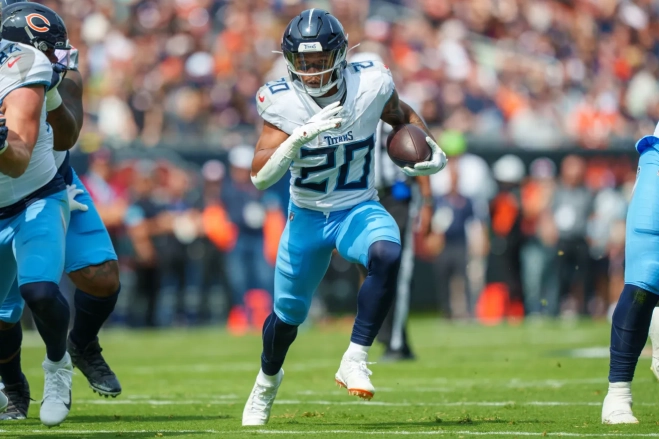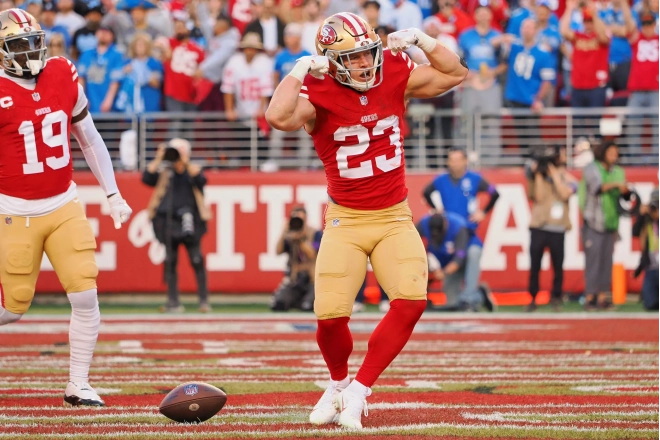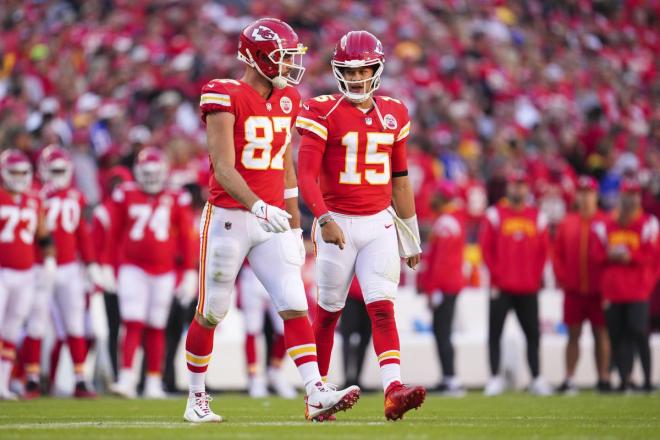This week, my DFS strategy article will focus on lineup construction for a large field GPP (Guaranteed Prize Pool) Draftkings Classic NFL slate. The specific NFL Draftkings slate I just mentioned will feature four football games. This will be in direct contrast to my previous NFL lineup construction strategy article that evaluated an NFL FanDuel slate that featured only one NFL game. It's safe to say that lineup construction for a slate with multiple games is vastly different for a Draftkings or FanDuel contest that presents a DFS contestant just a single football game to evaluate.
Before we discuss my DFS strategy for a multiple game NFL slate let's take a brief look at the rules for a Draftkings Classic NFL contest.
In NFL salary cap contests, participants will create a lineup by selecting players listed in the designated Draftkings player pool. The DFS contestant will be tasked with constructing lineups consisting of nine skill players from the player pool provided: 1 QB, 2 WRs, 2 RBs, 1 TE, 1 DST, and 1 FLEX (WR, RB or TE).
Lineups must include players from at least two different NFL games. These are the basic rules. Additional rules for the Draftkings NFL Classic are available on the Draftkings website.
Now that we have determined the rules for the Draftkings NFL Classic contest, let's shift our attention to my first step in the DFS multiple lineup construction process by accessing the ASL optimizer. In the image below, you will see the main screen of the ASL optimizer.
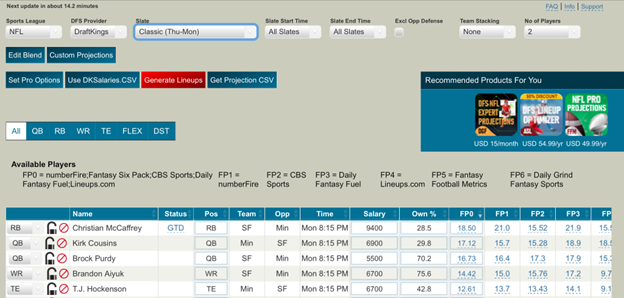
I observe the projected fantasy point totals for all skill players that are eligible for the contest. For me, at this stage, I am looking to identify the top skill players (RB,TE, QB, DST) at each roster position relative to projected fantasy point total. In the image above, you can view the projected fantasy points for each individual player under the FP0 tab. The FP0 tab provides a blend of the highest projections from multiple platforms, including CBS Sports and Fantasy Football Metrics, among others. The FP1-FP6 options allow the user to isolate the highest projected totals from ONE platform.
Next, I look to see potential correlations between skill players that are projected to have high fantasy point totals. My reason for doing so is crystal clear. If two skill players (QB, WR, TE, etc.) are projected to score a high number of fantasy points it could potentially be beneficial to utilize both skill players in multiple individual lineups.
For clarity, let me elaborate on my point regarding individual lineup construction. I will do so by providing a specific example. On this Draftkings NFL Classic slate, Kansas City Chiefs quarterback Patrick Mahomes and fellow teammate Chiefs tight end Travis Kelce are projected to score a high number of fantasy points in the team’s matchup with the Los Angeles Chargers. Having stated that, it certainly makes sense to get Kelce and Mahomes in one lineup. Why? In a hypothetical scenario, if Patrick Mahomes throws four touchdowns to Travis Kelce your lineups with stacks of Mahomes and Kelce will likely be towards the top of the Draftkings leaderboard.
My next step in the process is to press the Set Pro options tab. The image I presented earlier illustrates that the Set Pro Options Tab is on the top left-hand side. Once I have accessed the Set Pro Options option I am presented with the following:
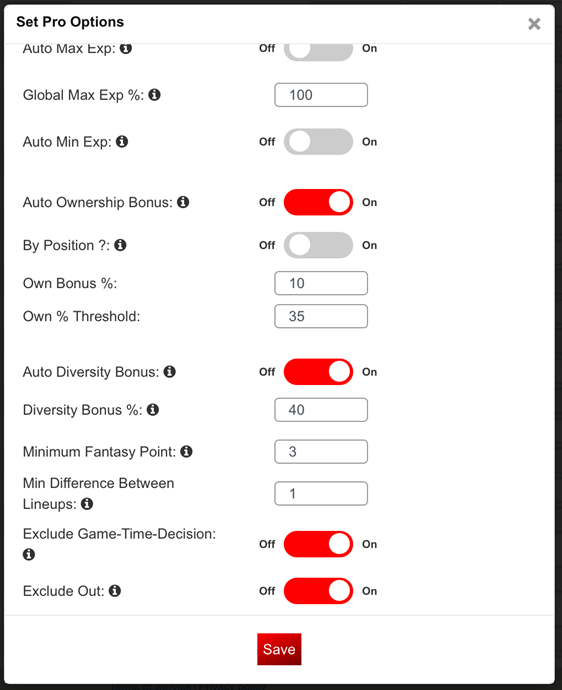
The Set Pro Options area of the optimizer allows the user to better differentiate DFS lineups from others in any NFL Classic contest. The image above shows that I have utilized Diversity Bonus. The way the Diversity Bonus works is that when the optimizer is building your lineups, if it considers a player that is not in any of your other lineups, that player will get a 40% bonus added to their fantasy points. If with that bonus, they are the best player for the lineup it is working on it will use the player, but if there is still a better player, even with the 40% bonus, it will use the other player. This is what we call a soft constraint. There is no right or wrong answer, just the higher you set the bonus the more unique players will be added to your lineups.
Lastly, now that I have entered the data, I request the optimizer to provide 50 lineups. The ASL optimizer allows you to enter a large number of lineups (up to 150) at one time with ease via a CSV. In this instance, I obtained the 50 lineups via a CSV and accessed the Draftkings site. I entered the CSV and now I am ready to watch the games!
...
Well, here we are a day later. How did my lineups do? Let’s take a look at an illustration below of my top performing lineup in this large field 150 max entry GPP:

My top performing lineup of the 50 entered is illustrated above. Considering the fact that this large field GPP contest consisted of over 9,500 entries, 131st place is not bad (relative to the field). Why did my top performing lineup finish so high in this contest? I can thank Mahomes and Kelce. Mahomes threw for over 400 yards and Travis Kelce amassed 179 receiving yards.
In summary, my pre-game thought process regarding stacking Mahomes and Kelce certainly was a great option. Although I did not win this large field contest, I certainly feel great about my DFS lineup construction process. Having stated that, it’s just a matter of time before I win another large field Draftkings GPP contest.

